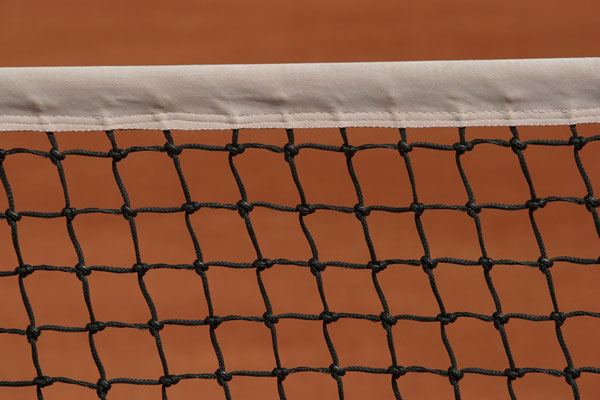They were among the NBA’s most exciting teams, always winning
50-plus games, always packing their building, always making the
playoffs and twice reaching the conference finals. The Phoenix Suns
of yesteryear accomplished this despite starting guards who were
relatively small and nearly invisible on defense. Sound familiar?
The old Suns tandem of Kevin Johnson and Jeff Hornacek may be the
best, though not the only, example to shatter the myth that the
starting backcourt of Monta Ellis and Stephen Curry stands between
the Warriors and the playoffs.
They were among the NBA’s most exciting teams, always winning 50-plus games, always packing their building, always making the playoffs and twice reaching the conference finals.
The Phoenix Suns of yesteryear accomplished this despite starting guards who were relatively small and nearly invisible on defense.
Sound familiar?
The old Suns tandem of Kevin Johnson and Jeff Hornacek may be the best, though not the only, example to shatter the myth that the starting backcourt of Monta Ellis and Stephen Curry stands between the Warriors and the playoffs.
The extended life of this theory keeps alive a spurious debate. Discussion about the current Warriors roster, no matter where it begins, always finds its way to Ellis and Curry. Though one likely would have to be sacrificed in a package to fetch a big man, don’t tell me their relative lack of size (both are 6-foot-3 and slender) prevents their coexistence as starters on a playoff-caliber team.
The side of the debate buying into this ignores that Ellis and Curry do not represent the team’s primary problem.
The Warriors’ bigger problem, much bigger, is their supporting cast.
If Larry Riley, with his elaborate new title (general manager/executive vice president), says he isn’t weighing decisions related to trading Ellis or Curry — as he insisted Friday — it’s because he recognizes what surrounds them and, more relevant, what does not.
During a season-ending news conference that also served to introduce new assistant G.M. Bob Myers, Riley carefully and candidly analyzed his roster. He talked about the need to fix the center position, beginning with an intense effort to rehabilitate Andris Biedrins. Riley also stated the obvious, that finding a third guard is a priority and that the Warriors need another productive, defensive-oriented player on the wing.
“(We) have to hit on all three of them to make the playoffs,” Riley said.
Something else Riley conceded was that the Warriors need to improve their rebounding and their ability to get to the foul line. Yes and yes.
“If you spot somebody five rebounds (per game) and seven free throws,” he said, rounding off the statistics, “you’ve got a problem.”
If Riley believes it’s possible to succeed with Ellis and Curry, his responsibility, along with the rest of the front office, is to identify and acquire teammates that allow Ellis’ and Curry’s considerable assets to offset their evident liabilities.
The Suns found a way to do it. Though Johnson was 6-1 on his tallest day, while Hornacek was a slim 6-3, Phoenix averaged 54 wins over four seasons (1988-92) with them as primary starting guards.
KJ’s skill set, mostly speed and explosion, was comparable to that possessed by Ellis. Curry provides a more diverse game than did Hornacek, who was primarily a spot-up shooter. All four earned their paychecks on offense.
It worked in Phoenix because KJ and Hornacek were supported by a solid but not spectacular collection of physical specimens such as Mark West (6-10) and Andrew Lang (6-11), each of whom routinely planted his 250 pounds in the paint. The Suns had fearless, hard-hat enforcers such as Kurt Rambis (6-8) and Xavier McDaniel (6-7). Tom Chambers, at 6-10, provided frontcourt offense and athleticism.
Those Suns teams weren’t much for individual defense, but they provided enough toughness and defensive presence to compensate. The bigs didn’t tolerate easy layups, and they also outrebounded their opponents in each of those four seasons.
More to the point, when opposing guards overpowered or slipped past Johnson or Hornacek, as they inevitably did, they ran into a forest of strapping bodies. Protection.
When opposing guards overpowered or slipped past Ellis or Curry, they ran into rookie Ekpe Udoh — or nothing. Power forward David Lee offered little resistance, Biedrins was invisible and Lou Amundson was unreliable.
The expectation is that Udoh will improve and that Biedrins almost has to, if only because his regression surely must have hit bottom.
Though today’s NBA is different in many ways from the league of 20 years ago, two things remain the same. One, sheer physical size can make an impact and, two, defensive presence is essential to winning.
The age/experience of the Ellis-Curry tandem is similar to that of KJ and Hornacek during that four-season stretch. Ellis and Curry are exceedingly difficult for opposing defenses — and should become more difficult as Curry sees the advantages of driving and reaching the foul line.
The Warriors seem committed to playing the high-octane game the Suns have patented. It has yet to deliver a championship to Phoenix, but it’s the signature of one of the of league’s most consistently competitive franchises.
With Ellis and Curry, the league’s most explosive guard tandem, the Warriors ought to be able to pull it off. The task ahead of Riley and Myers is to fix the surroundings, so the size of the guards won’t matter.
— Column by Monte Pool, The Oakland Tribune










